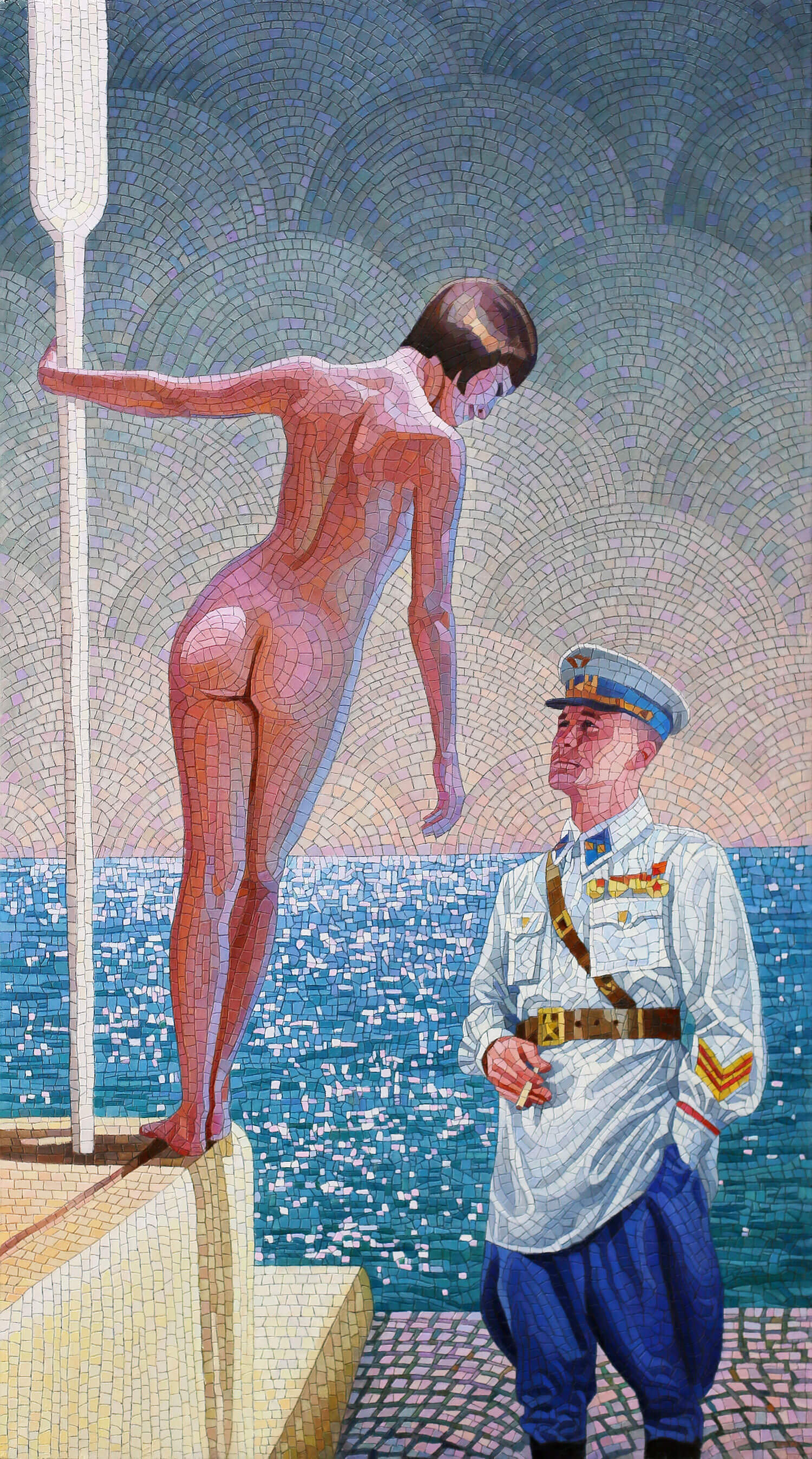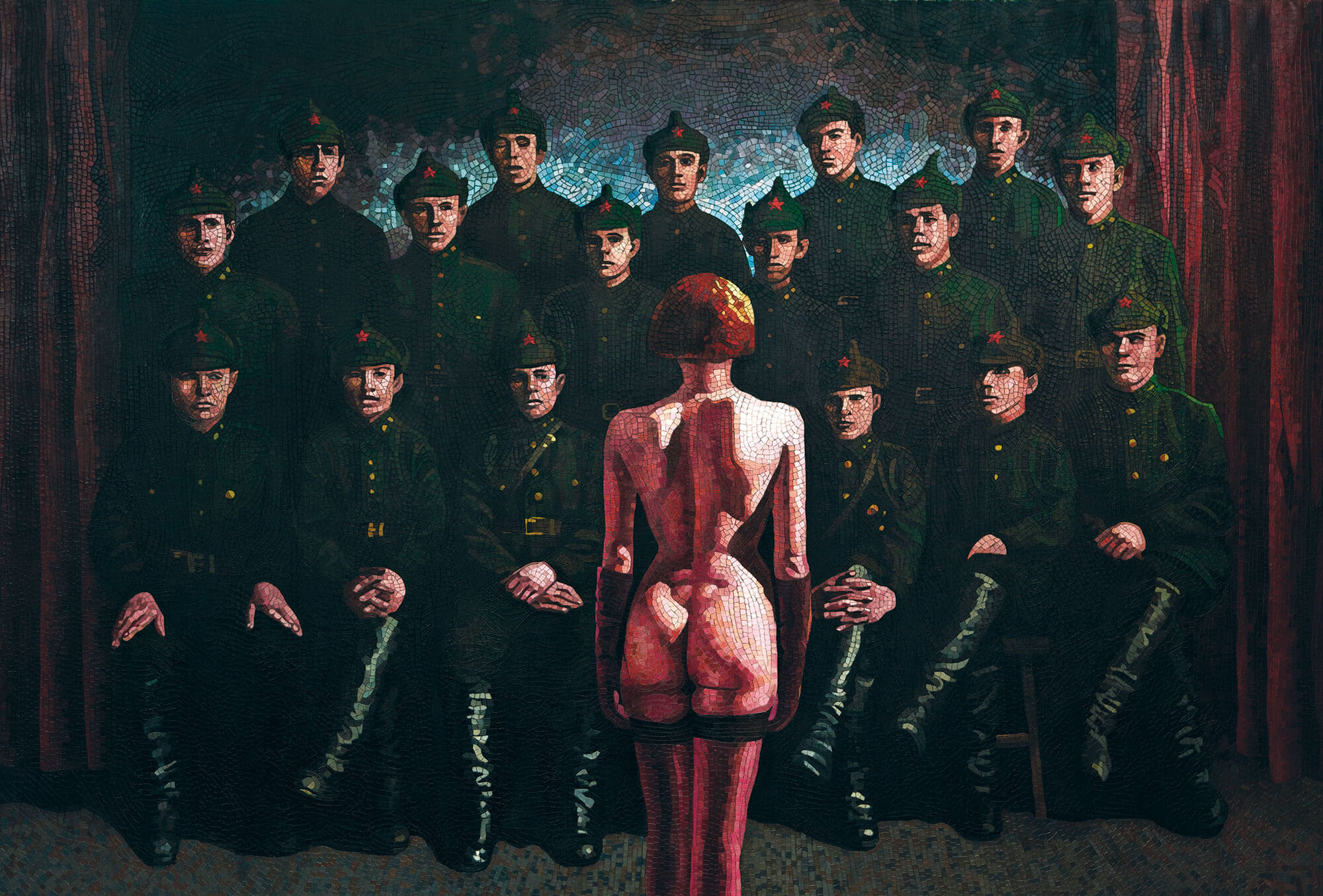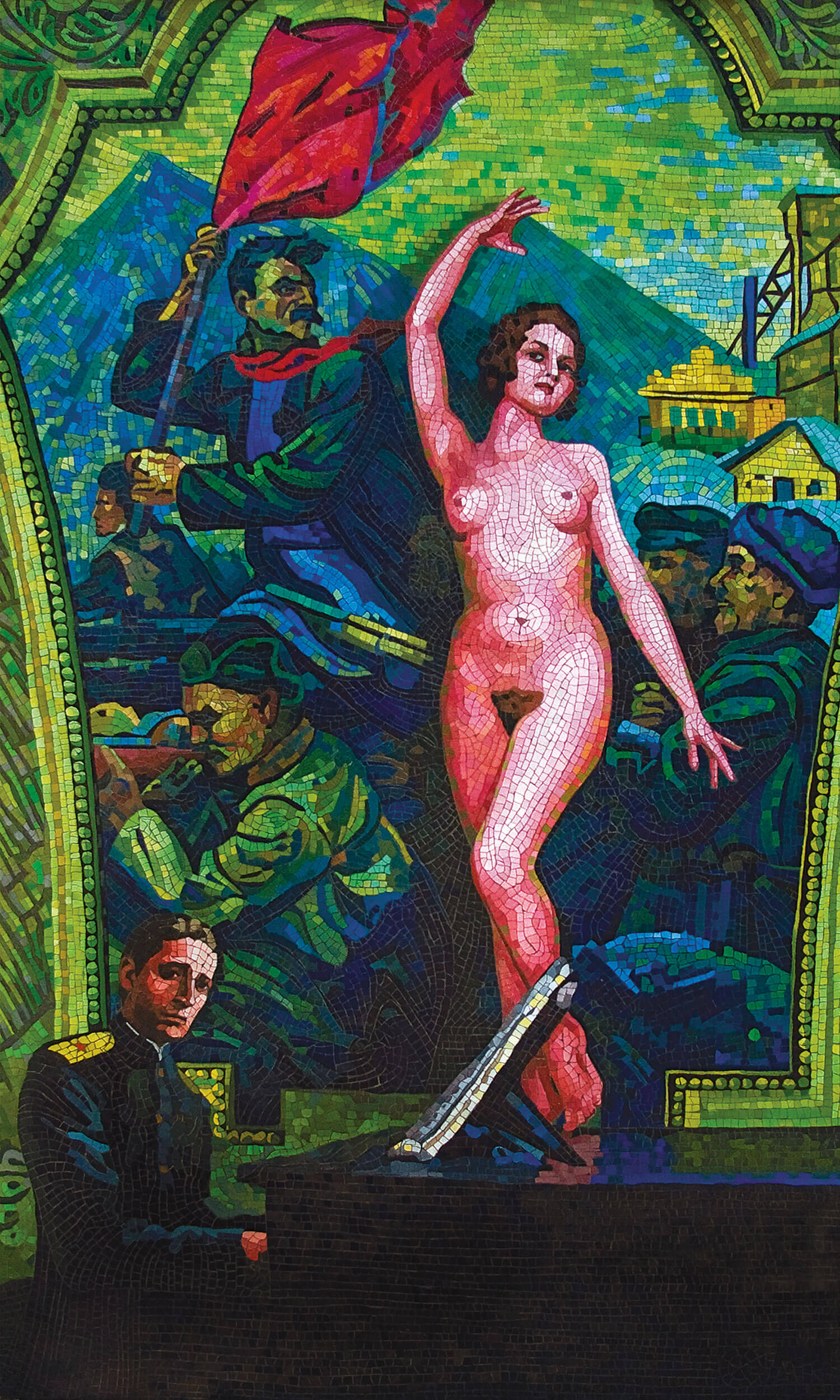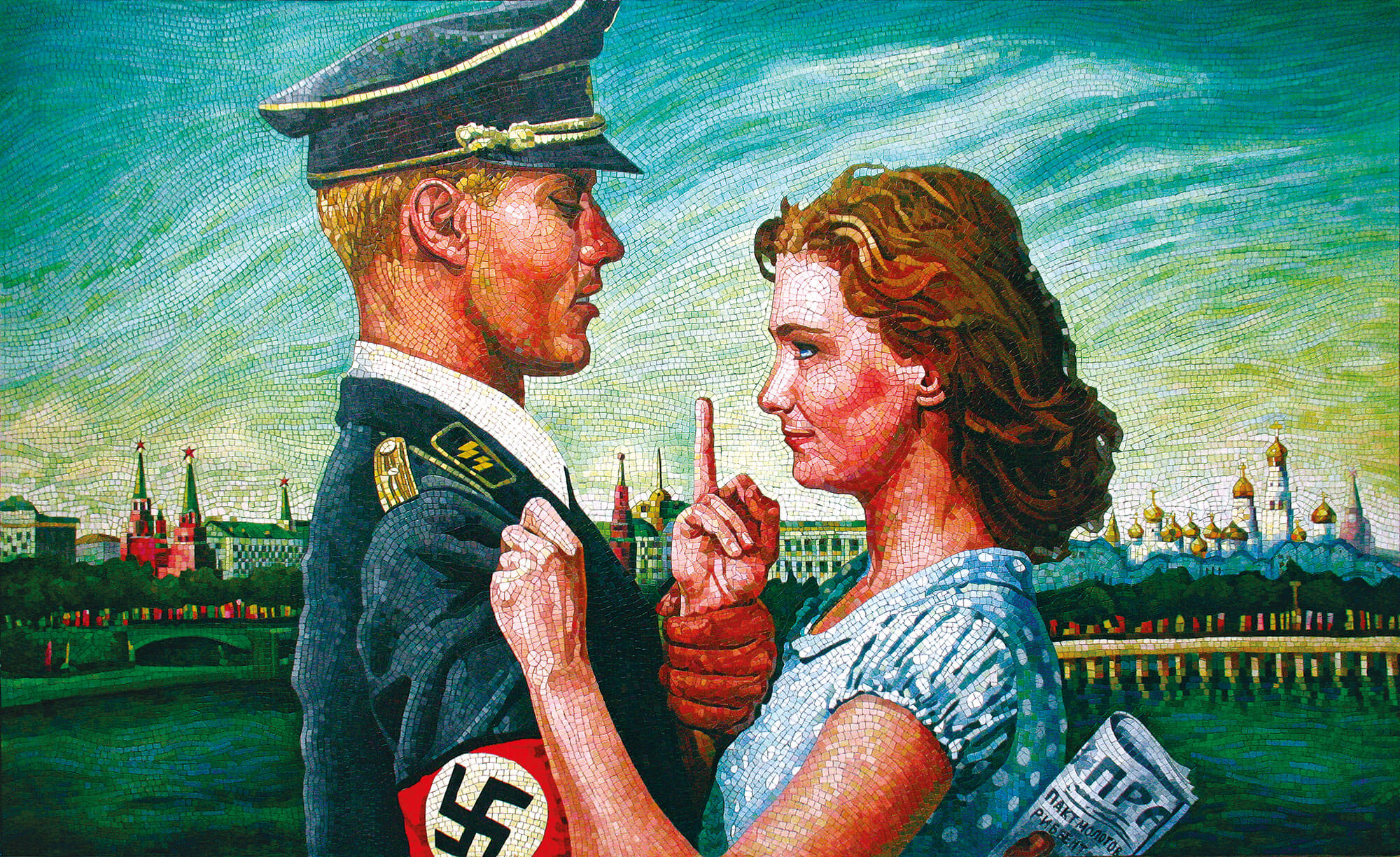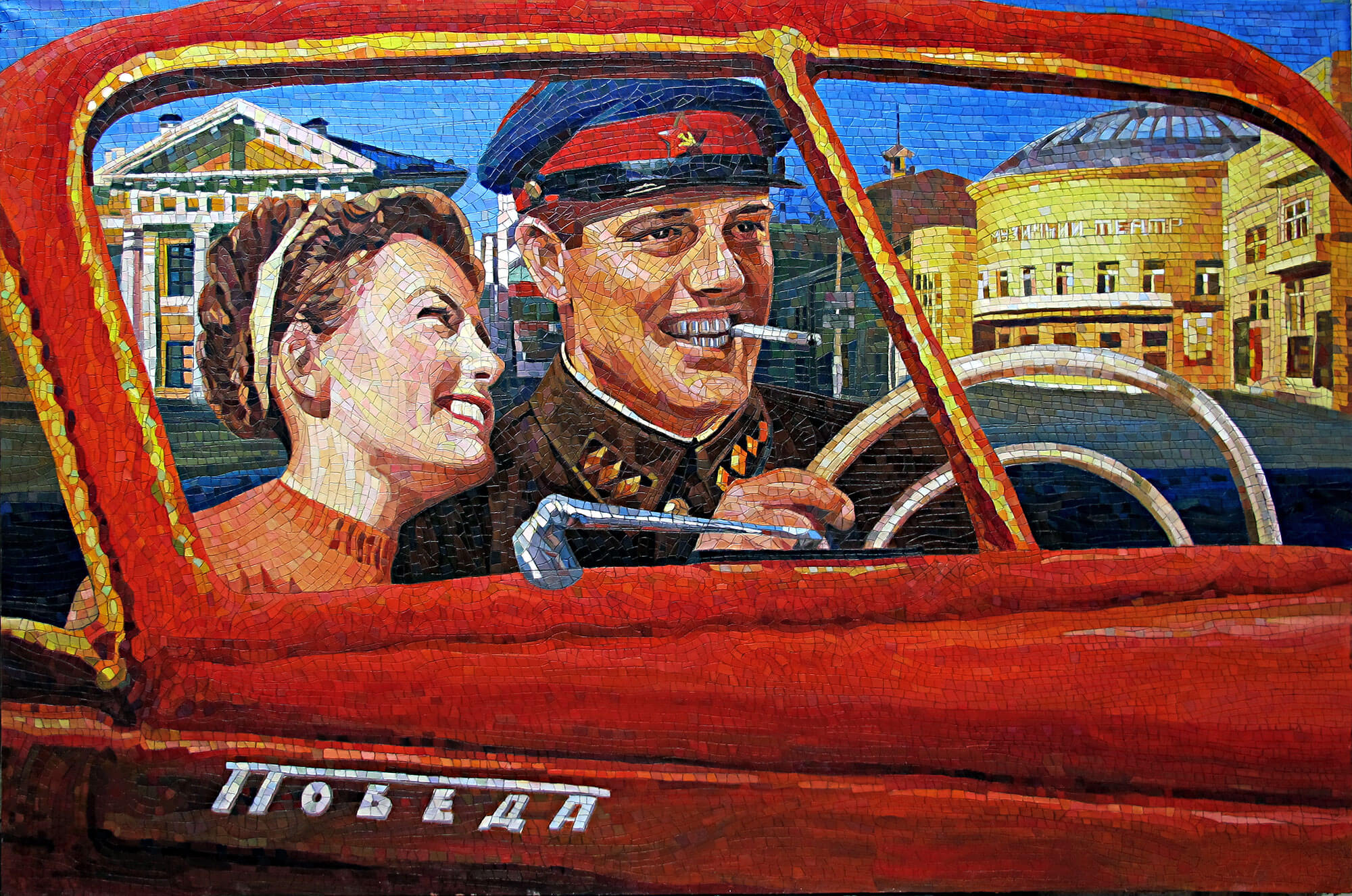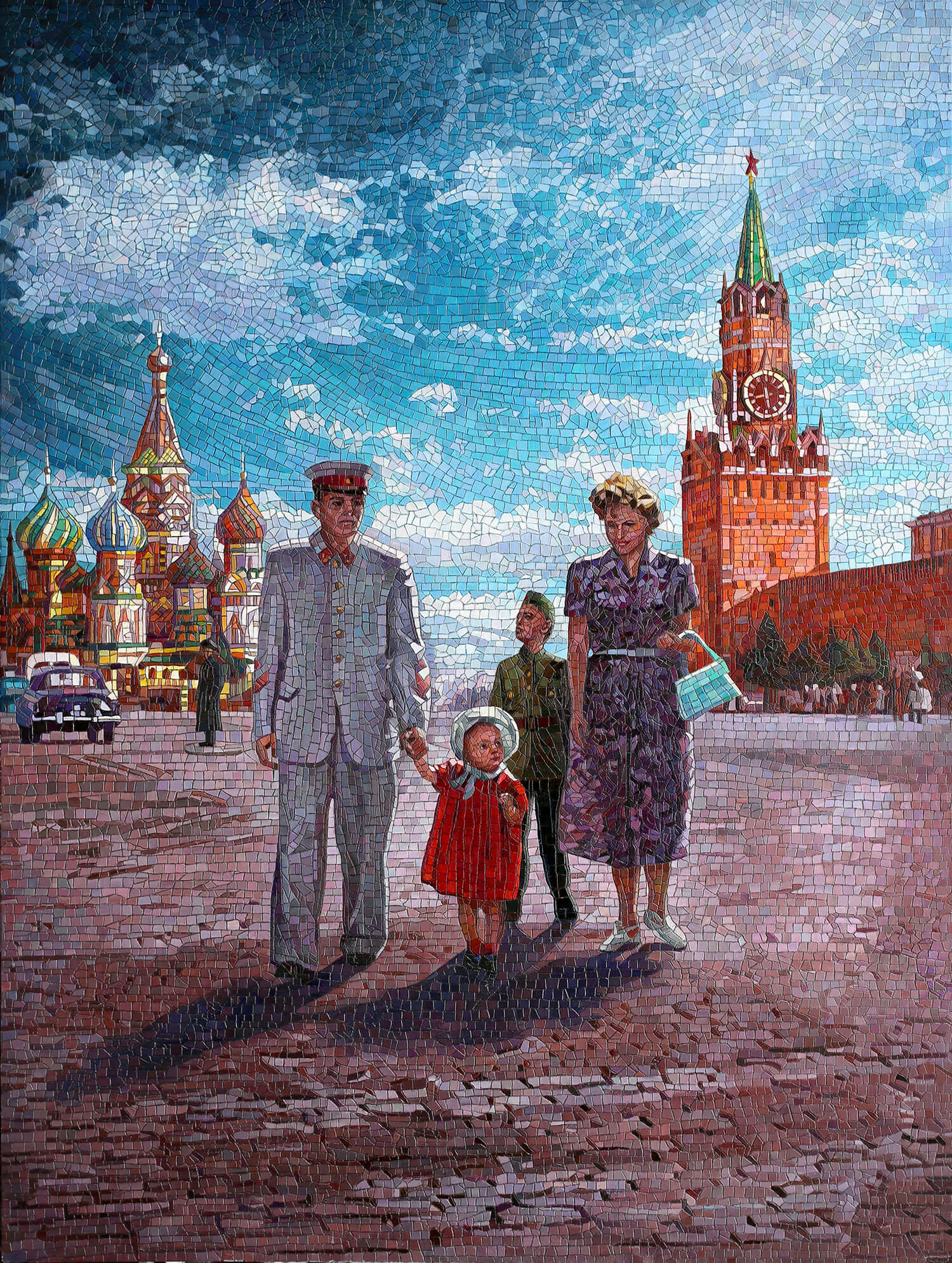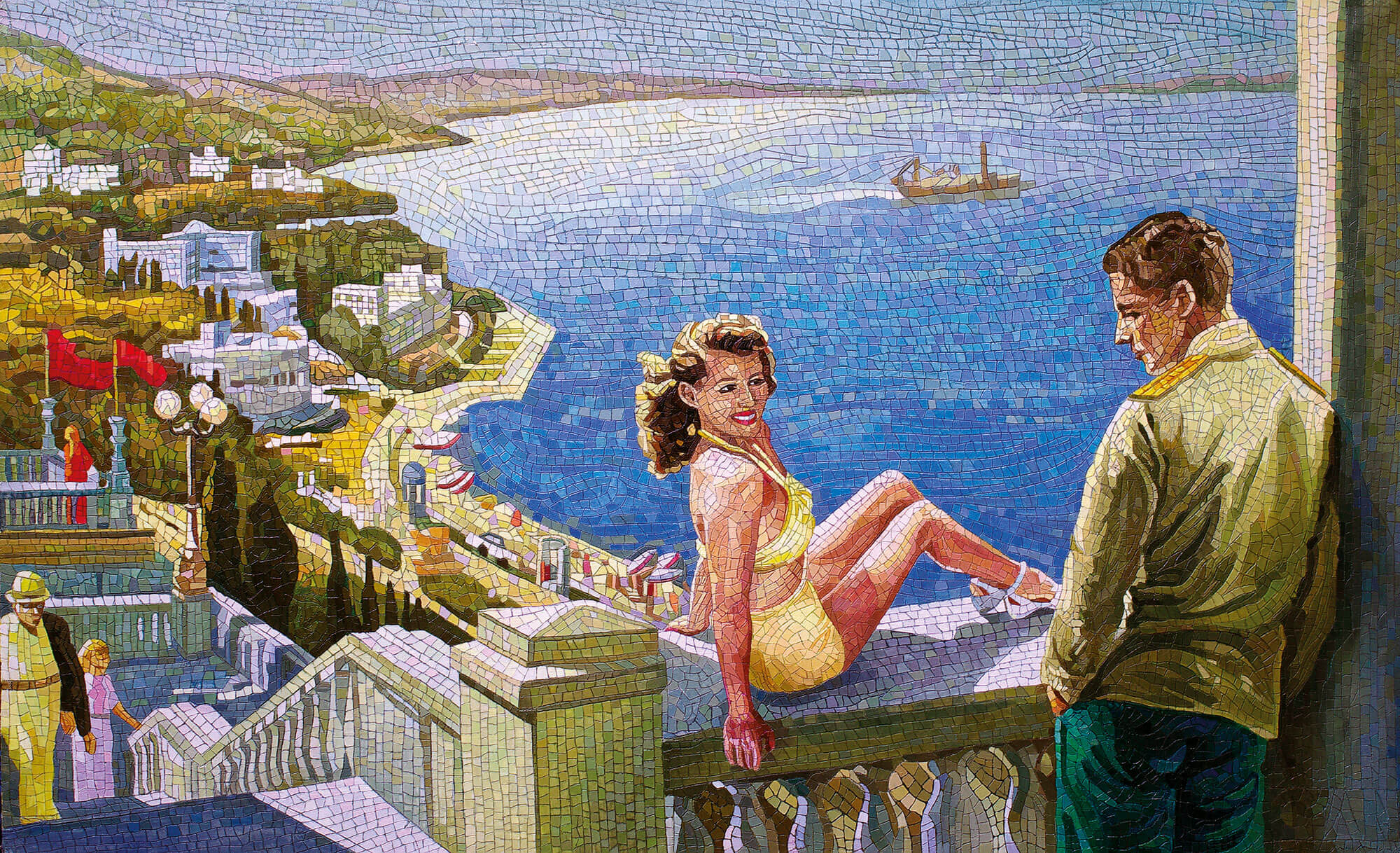MILITARY
ROLE-PLAYING GAMES
Bright future or Soviet nirvana.
by A. Gankevich
I grew up in a country where people built communism – a bright future for all humanity. I couldn’t really understand what it was, couldn’t imagine the behavior of people that creates a universal equality around… There would be no money, no division to poor and rich. Everything is equal. Everything would be available to everyone. “When communism comes to our life… everyone will be happy!” the adults said. “You just have to be conscious.” This meant having a conscience when you go to the shop and take any goods for free. Not to take anything extra, to live the present day, and let the government take care of tomorrow. This is how I defined “communism” and “bright future” as a child.
I asked, “But when will that communism come?”. The parents looked at each other and whispered, they said they wouldn’t make it until that time, but I was sure I would. At least I believed it for some time. But after I looked around, I realized it was impossible.
I understood that people couldn’t change for the better a second after the communism comes… But I still like the idea of communism because it’s a very Buddhist-like illusory.
Now I can compare my childhood idea of communism only to my current view of paradise or nirvana, as an ideal conscious afterlife society.
One of the important features of the “conscious” socialist realism is balancing out all the attitudes.
In my imagination, I pictured a “prosperous Soviet society” in which I stabilized the political situation and balanced all the needs and desires of people. It is a society with no wars, repressions, negative emotions and stereotypes, shortly speaking – a “Bright future”, but which would correspond to the system of values in our modern society, where people want to live a life being healthy, rich, successful and play golf. I pictured a “Soviet Nirvana”.
And if it’s a sport theme, then, without a second thought – all well-known respectable sports are important.
My childhood illusion of communism has been transformed and reinvented by me. But yet it still remained as bright as it was in childhood.
I came up with the “Fizcult-Respect” and “Military-roleplay games” series.
In addition, my childhood experience of working for my father, an artist, and a designer, helped me a lot. He worked at the art factory “Hud-Fond” and every spring, since the 50s, traveled with the brigade to Moscow, designed the exposition pavilions of the VDNKh (Russian Exhibition of Achievements of the National Economy). I helped him since the age of 12 – I drew visual agitation. These projects I dedicate to the memory of a father and an artist A. Deineka.
NEP DOESN’T END
When the bus
drives
through the dust,
passing wax-like chapels,
I can see them clearly –
two of them,
there’s two of them in Moscow –
Moscows.
(“Two Moscows” by V. Mayakovsky)
A city, which stands at the crossroads of the past and the future – this was how Mayakovsky saw Moscow in 1926. A crowded, “old deaf woman”, where the “mat of the pawn” is expanding, and at the same time a completely new space is being built – another Moscow, a futuristic Stalin utopia, in which there is no place for an ordinary person from the past. And exactly to that second Moscow, and the esthetics of the early Soviet futurological optimism, the new project of Anatoly Gankevich “Fizcult-Respeckt” is devoted to.
A new series of large-format paintings is painstakingly made in the traditional for Gankevich art technique of mosaic imitation. In addition, in this exact series that pseudo-mosaic texture, referring to the classics of world sacred art, is as appropriate as possible. The new works of Gankevich are “fizcult-privet” to the esthetics of the early Soviet “spaces of rejoicing”, successfully described by Mikhail Rykin in the same-named essay. The new picturesque series by Anatoly Gankevich is a real set of quotations from the history of art of the 20th and the 30th centuries. It makes us remember the classic of the genre – the bright monumental mosaics of the Moscow metro, this communist temple-like complex, anticipating the coming happy and unbothered Tomorrow; utopian monumentalism of the VDNKh, happy faces smiling from the posters of early Soviet time and all the endless optimism of post-revolutionary culture, which has not yet managed to completely digest the avant-garde, survive the 1937 and proclaim a course for the triumph of bureaucracy and gerontophilia. In this utopian city, illustrated by Gankevich, perhaps, still live Chuk and Gek, somewhere here Timur collects his team, it is here, where all the favorite Soviet films take place – this mirrored side of totalitarianism, the ideal city of Giants, the dream, which is still feels so acutely in the Moscow architecture and monumental art of the Stalin period.
Anatoly Gankevich’s artworks are left without the typical for modern art social pathos – the artist deliberately immerses the viewer into the utopian space, dwells him with a fairy tale about the city that didn’t exist. In his traditionally pan-esthetic work, Gankevich is far from a critical position. He prefers to feed the viewer with a positive cocktail from the elements of modern culture and the era of the rebirth of the Russian avant-garde into socialist realism. “The USSR is the birthplace of my dreams” – once Ryklin said. In Gankevich’s “beyond time” sleep, Nabokov and his beloved Lolita play tennis on the VDNH lawn, Mayakovsky carries a stick for the “bourgeois” golf on the Red Square, races on the racetrome are accompanied by a synchronous parade of air bombers, and all of the space in the paintings is lit up with not usual Moscow-bright, life-affirming light, distinctive for the artworks of early social realists, inspired by the idea of a bright communist future – such as Alexander Deineka.
